Visual Communication
Skyscanner’s Design Expert Shares Tips For Successful Branding In 2021
By Ellen Clipson - 4 min read
Summary: Many brands are facing changes in the marketing landscape and critical budget cuts in 2020. Skyscanner’s design expert Judson Cowan explains how building visual guidelines and sourcing user-generated content have been the critical steps towards future success.
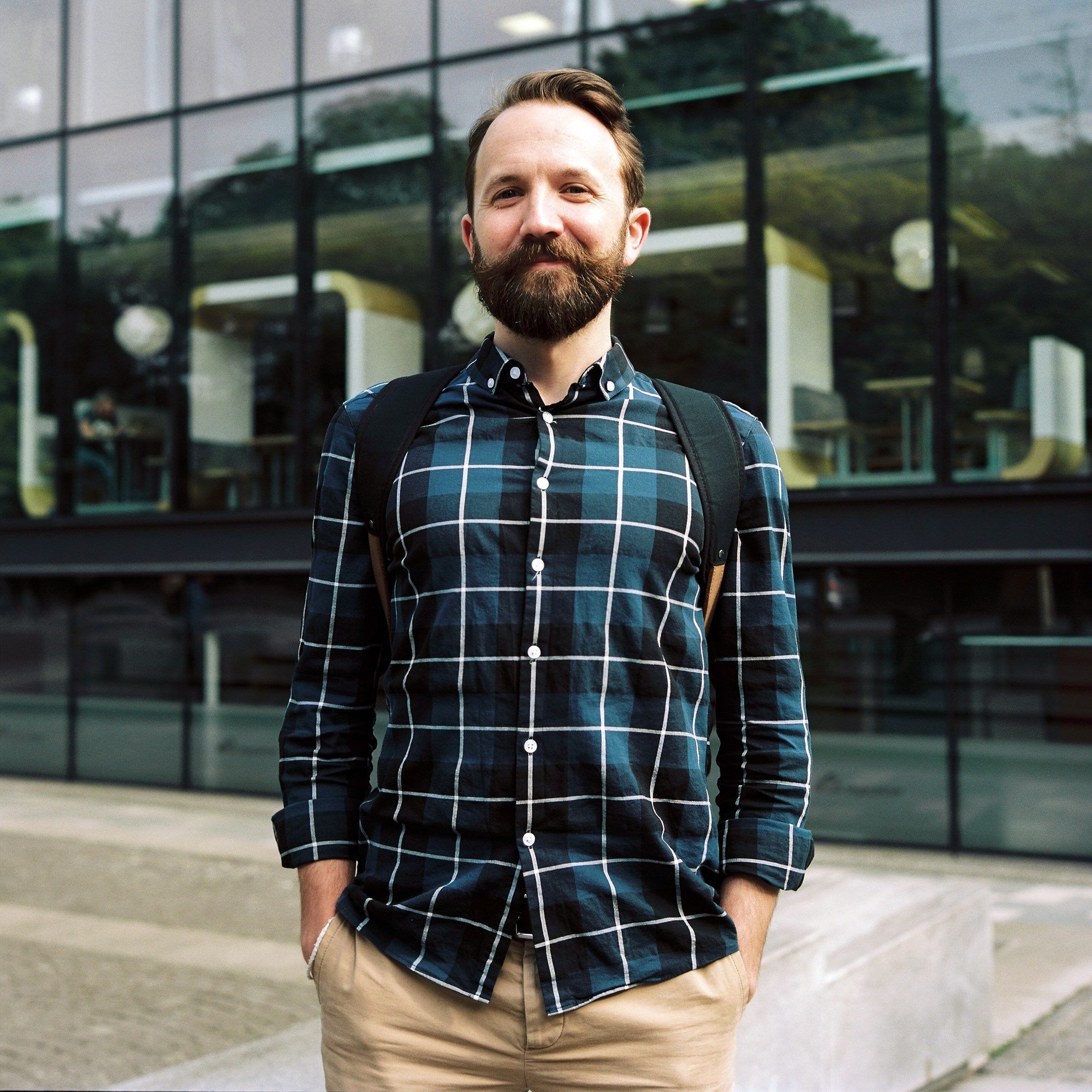
Why Defining Your Brand Aesthetic Is Essential For Successful Visual Marketing
Judson Cowan, Senior Designer Manager at major travel brand Skyscanner, tells us why visual guidelines have been critical for the brand bouncing back after being hit by the challenges of COVID-19.
How would you describe Skyscanner’s visual brand aesthetic?
Designed to offer great flexibility and dynamic range, our brand is build on four main pillars; bold, joyful, helpful, and straightforward.’
Our new symbol represents a sunrise as it embodies the role we want to take as catalysts for a new era of ethical and effortless travel. Whereas our color scheme is bright and vibrant and inspired by the world we want to help travelers explore.
“people haven’t stopped dreaming about places they’d like to visit”
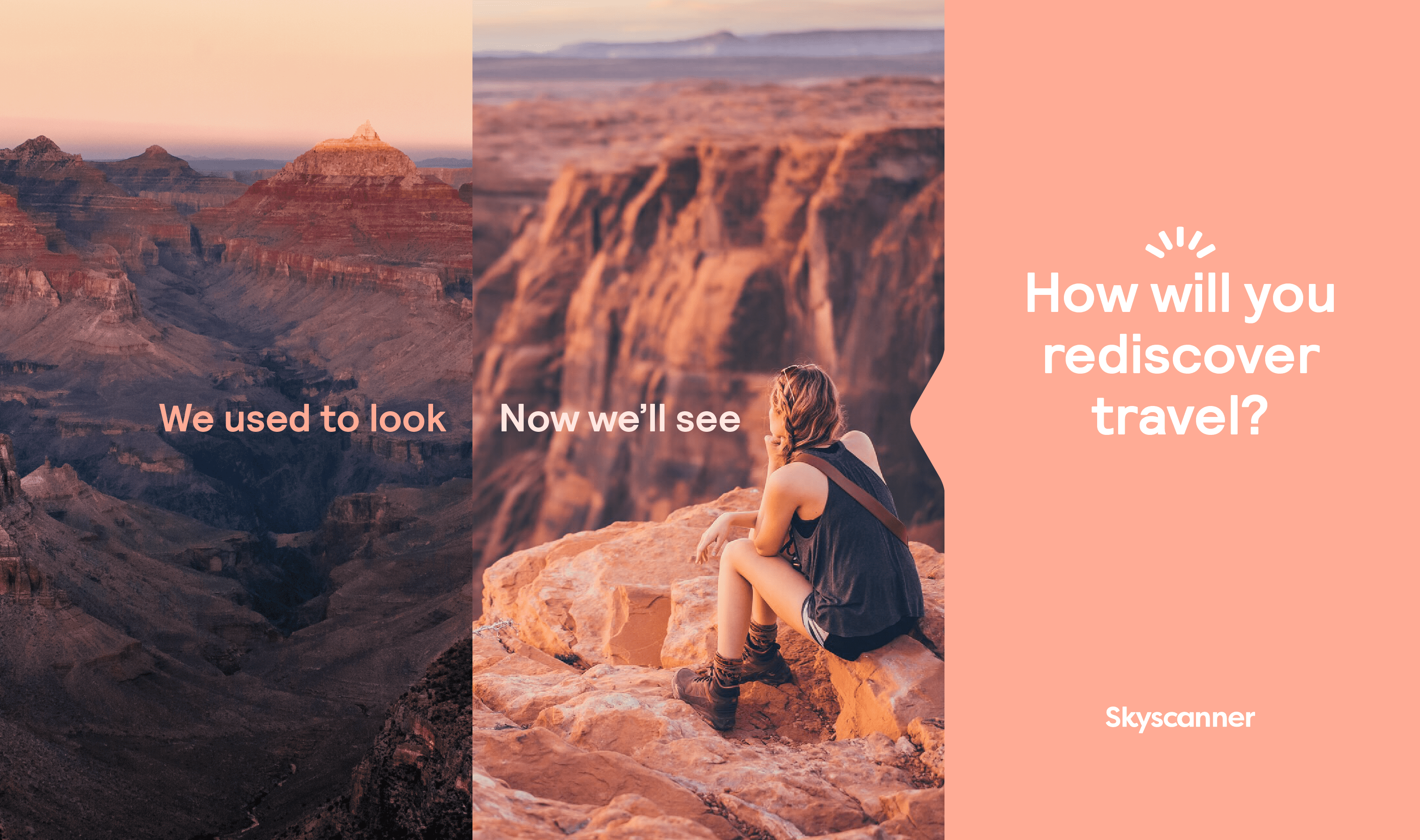
Skyscanner’s ‘Rethink Travel’ 2020 Campaign featuring EyeEm imagery
How does Skyscanner use visuals to represent its brand?
With all our brand visuals we like to think of things on a spectrum from emotional to functional and categorise imagery into buckets.
‘Destinations’ and ‘Attractions’ focus on the functional side and provide visual information about a given place, to help travelers understand more about the location and orientate themselves. Whereas ‘Experiences’ and ‘Moments’ are focused on the real human experiences you have when travelling and will prominently feature a diverse range of people from around the globe. For us here at Skyscanner, representation matters. Diversity and representation are important in all of our imagery, it’s a huge world and all of us are travellers of one sort or another.
As a result of COVID-19, do you use more or less images in your branding?
I’d say the amount remains the same, however some of the type of imagery and subject matter has changed.
The changes can be seen in our more direct marketing. We want to be aspirational and inspire people, but acknowledging the reality of the world we live in is also important. Images of people wearing correct facial coverings and physical distancing are more and more important.
Despite travel disruptions, people haven’t stopped dreaming about places they’d like to visit. Our evergreen destination imagery remains a high-performer in our social channels.
Have your visual guidelines changed due to the pandemic?
The visual guidelines themselves have not changed, but due to the change in safety guidelines, the way we use imagery to represent travel certainly has. We aim to represent the world we want to live in. One where people show respect for one another’s health and safety.
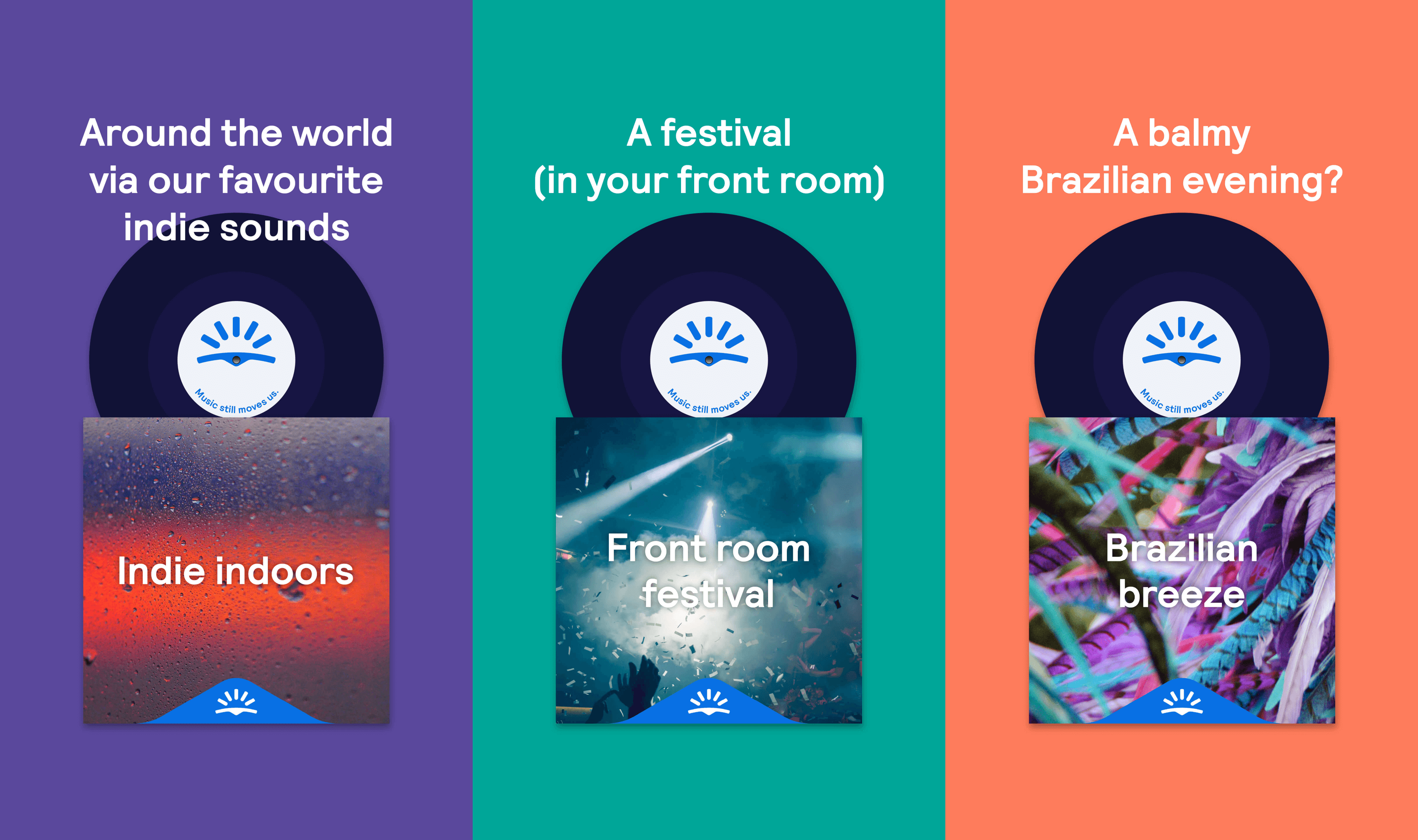
Skyscanner’s Spotify Playlists Featuring EyeEm imagery
What do you translate specific topics such as safety and confident travel into your visual marketing?
Beyond the safety guidelines I’ve already mentioned, giving travelers confidence was also a major focus for our marketing team. By that I mean giving our consumers confidence that they’re making the right decision – whether that’s deciding to travel or NOT to travel.
This work continues today as we develop new product features that allow people at a glance to see what areas of the world are open, which airlines offer refunds for cancelled flights, and which hotels and accommodations have the appropriate health and safety practices.
How have you ensured Skyscanner’s branding remained responsive to change without compromising on your core brand values?
Our core values have always been about supporting travellers. With that aim in mind, we spun up a specific series of workstreams dedicated to supporting travelers through COVID. All other marketing activity was stopped and our focus shifted to providing relevant and timely information to help people understand what was happening in the travel world and how it was changing day to day.
For example, we produced assets to support working parents by creating playpacks to keep kids engaged, and partnering with Mumsnet and Little Box of Books to provide additional support.
How does your team strive for authenticity and cut the ‘cliche’ out of your brand visuals?
This is going to sound like I’m being paid, but I think working with smaller imagery companies gives you access to more authentic imagery. I’ve always liked EyeEm because it feels like a balance between user generated content and stock. I see more real people and less posed imagery than from larger providers like Getty.
We still work with larger providers too, especially to find very specific destination imagery, but for the emotional side of photography we lean pretty heavily on sources like EyeEm, freelance photographers, and custom shoots.
“We look for photographers that are locals to the destination to get their insights”
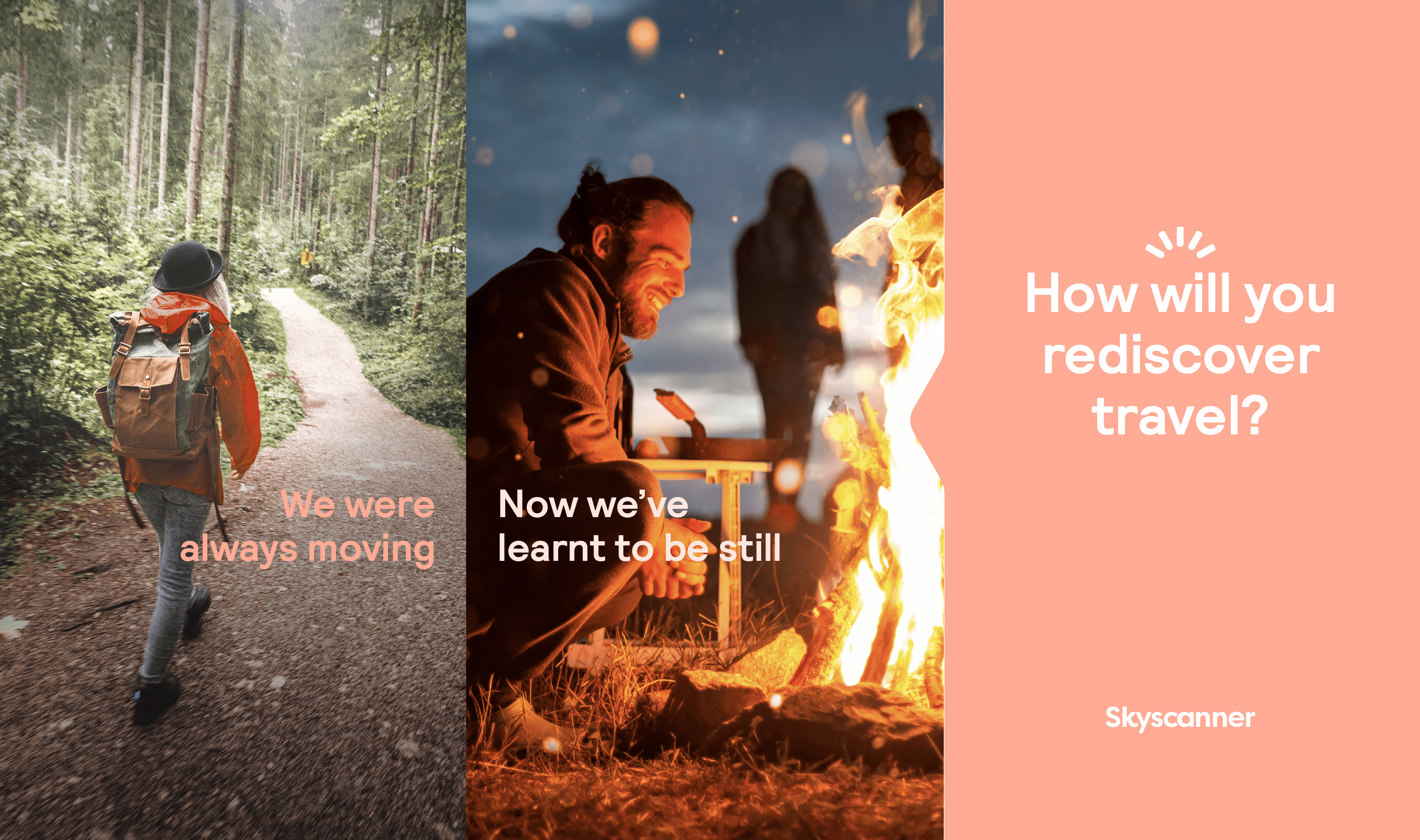
Talking of custom shoots, how do you collaborate with photographers to ensure your visual guidelines are upheld when on-set?
The key aspect of our guidelines that is always paramount in our production briefs is capturing real human experiences. We look for photographers that are locals to get their insights on the hidden gems and best things to do.
We’ve traditionally given photographers a lot of freedom after handing them a solid brief that explains what we’re looking for. Everyone travels and everyone sees the world in different ways, and we want to give them the opportunity to express their unique angle.
Travel disruptions and safety guidelines have impacted the work of many creative teams. How have you adapted your photo productions ready for 2021?
COVID has had a devastating effect on our team and on our budgets. Luckily, we already had a few briefs paid in full before things struck so we’ll still have some bespoke imagery coming in this year.
It’s difficult to speculate a month ahead right now, much less a full year, but we’re already seeing an upward trend and the return of some of our marketing budget. For now we will rely on stock to keep things moving.
Reach out to us to find out how we can work with your in-house team to prepare your branding for 2021. Kick-start your next campaigns in the right direction with our custom image licensing packs and photo shoots.
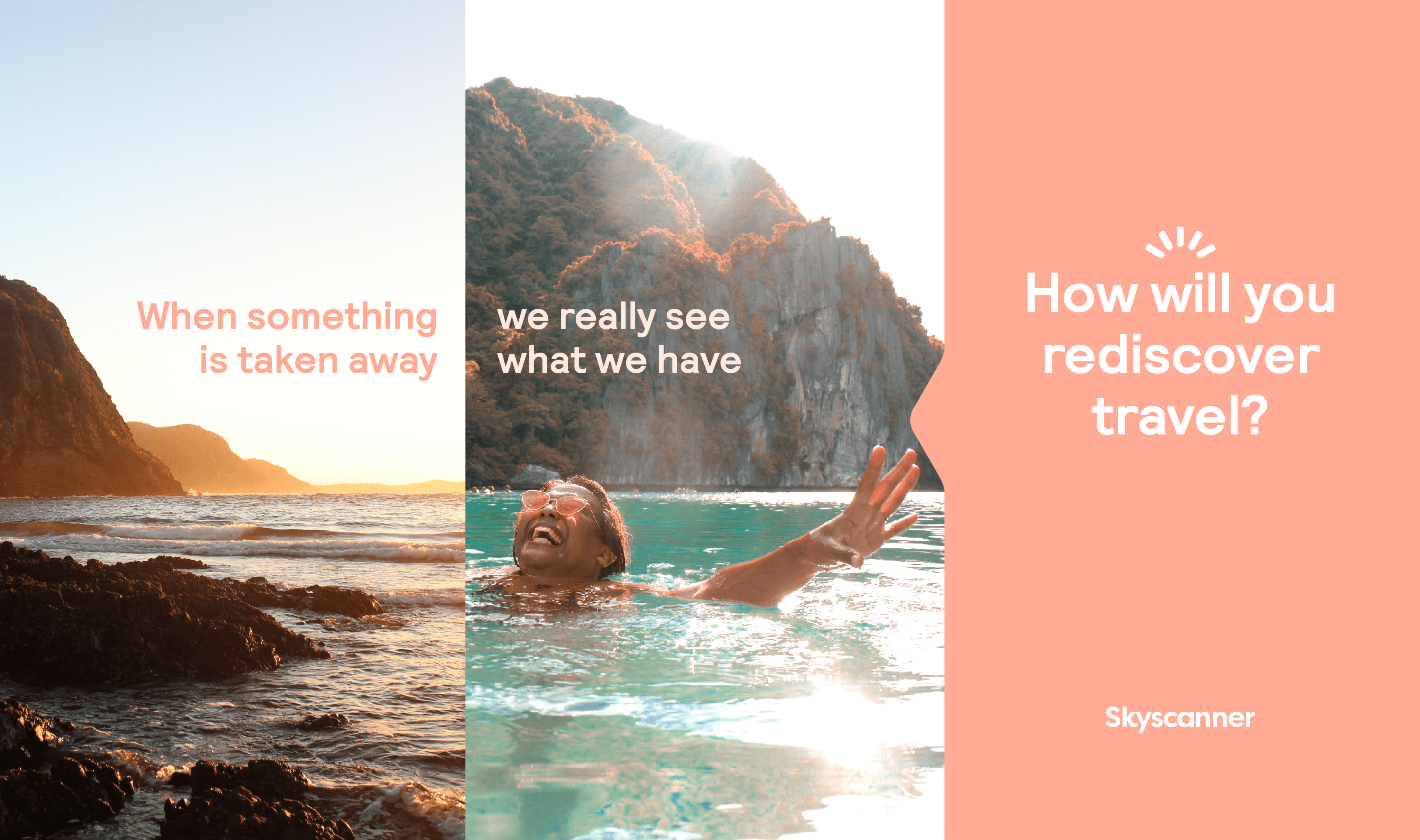
Credits for featured work: Katie Young – Copywriter / Kim Durbridge – Copywriter / James Bradley – Designer / Scott Walker – Creative Director / EyeEm Photographers - Images
Credits for portrait image:
Ilya Ilford - Photographer (Shot on medium format film)
